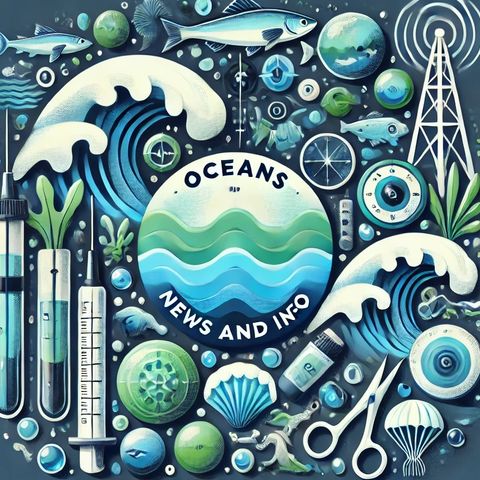USGS Scientists Spearhead Nationwide Effort to Tackle Dangerous Algal Blooms

Sign up for free
Listen to this episode and many more. Enjoy the best podcasts on Spreaker!
Download and listen anywhere
Download your favorite episodes and enjoy them, wherever you are! Sign up or log in now to access offline listening.
USGS Scientists Spearhead Nationwide Effort to Tackle Dangerous Algal Blooms
This is an automatically generated transcript. Please note that complete accuracy is not guaranteed.
Description
Algal blooms, a natural phenomenon often seen in bodies of water, can take on a dangerous edge when they become harmful. Not all algal blooms pose a threat, but under...
show moreThe significance of this research lies in its comprehensive scope. USGS scientists are not limited to one region but are scattered across the nation, ensuring that varying local conditions and the unique challenges of different water bodies are studied and understood. These scientists employ a multidisciplinary approach to tackle HABs, encompassing hydrology, biology, chemistry, and environmental science.
One of the primary goals of USGS research is to predict when and where harmful algal blooms are likely to occur. By analyzing patterns in weather, water temperature, nutrient levels, and other environmental factors, scientists can develop models that forecast the appearance of HABs. Early prediction is essential for enacting preventative measures and informing the public in a timely manner to mitigate exposure risks.
Beyond prediction, USGS efforts are also focused on prevention and mitigation. Scientists study the sources of nutrients that often fuel these blooms, such as agricultural runoff, wastewater discharge, and other human-induced factors. By understanding these sources, USGS can recommend and sometimes implement strategies to reduce nutrient loads entering aquatic ecosystems. This might include promoting agricultural best practices, enhancing wastewater treatment processes, or restoring wetlands to naturally filter pollutants before they reach larger bodies of water.
Another critical aspect of USGS research is the development of mitigation techniques once a bloom is detected. These can range from mechanical removal strategies to targeted chemical treatments designed to minimize ecological disruption. Public health advisories, based on USGS monitoring, also play a crucial role in preventing exposure during active blooms, ensuring both people and wildlife remain safe.
The impact of harmful algal blooms extends beyond immediate health threats. Economic activities such as fishing, tourism, and even water treatment can suffer significant downturns when a bloom strikes. The research conducted by USGS not only safeguards lives and ecosystems but also helps sustain economic stability for communities dependent on clean and healthy water bodies.
In summary, while not all algal blooms are harmful, the proliferation of those that are poses significant risks to health, wildlife, and economies. USGS scientists across the nation dedicate their expertise to the understanding, prediction, prevention, and mitigation of harmful algal blooms, employing a broad, collaborative approach to keep our waters safe. Through these concerted efforts, USGS continues to provide invaluable protection and insight, helping to preserve the integrity of aquatic ecosystems and the wellbeing of all who depend on them.
Information
| Author | QP-4 |
| Organization | William Corbin |
| Website | - |
| Tags |
Copyright 2024 - Spreaker Inc. an iHeartMedia Company
